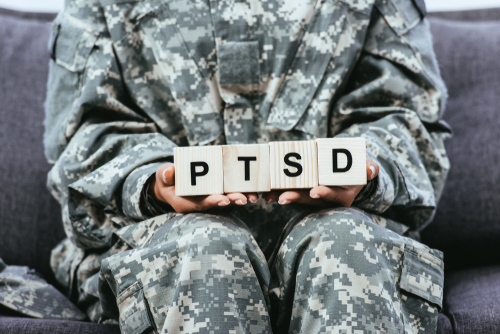Post-traumatic stress disorder (PTSD) is a mental health condition that is included in a new category in the Diagnostic and Statistical Manual of Mental Disorders, Fifth Edition (DSM-5) called Trauma- and Stressor-Related Disorders. According to Psych Central, PTSD is characterized by symptoms of “avoidance and nervous system arousal after experiencing or witnessing a traumatic event.” PTSD can occur when an individual experiences a single traumatic event, several traumatic events, or ongoing trauma. An individual that has PTSD is often left feeling powerless and out of control. PTSD can occur when an individual has experienced severe stress or anxiety after being exposed to a traumatic event. Examples of the most common causes of PTSD, provided by the Mayo Clinic could include, but are not limited to the following:
- Childhood abuse
- Sexual assault
- Military combat
- Violent assault
- Natural disaster
- Living through a traumatic physical ailment
There are many people who are exposed to something that may be perceived as traumatic, but that does not mean that he or she will inevitably will go on to develop PTSD. For individuals that do develop PTSD, however, it is essential to know that with proper treatment anyone can overcome his or her PTSD.
Sign and Symptoms
Every person is different and will exhibit a unique combination of signs and symptoms, with varying levels of severity when it comes to PTSD. The National Institute of Mental Health (NIH) list common examples of signs and symptoms that may present in a person suffering from PTSD, some of which include the following:
- Difficulty with physical contact
- Depression
- Anxiety
- Isolation
- Difficulty concentrating
- Low self-esteem
- Agitation
- Reckless behaviors
- Regressions
- Irritability
- Irregular sleep
- Physical aches and pains
- Constant feelings of fear and worry
- Hyper vigilance
- Experiencing crying spells
- Tense muscles
- Suicidal ideations
- Exhaustion
- Risky behavior
- Social anxiety
Furthermore, it is highly common for individuals with PTSD to suffer from a comorbid disorder. Dual diagnoses that are commonly associated with PTSD are chronic pain, anxiety disorders, depression, and attention deficit/ hyperactivity disorder.
Treatment
There are a variety of treatment options available for individuals diagnosed with PTSD. Although dialectical behavioral therapy (DBT) was originally developed to treat individuals with borderline personality disorder (BPD) it has since proven effective in treating other mental health ailments, including PTSD. While DBT is a form of cognitive behavioral therapy (CBT) and does incorporate many aspects of the CBT approach, it differs in that DBT places primary emphasis on the psychosocial aspect of treatment. Dialectical behavior therapy is comprised of three distinct components: weekly individual psychotherapy sessions, weekly DBT group skills training sessions, and as-needed phone coaching. The group DBT skills training sessions are used to teach and help facilitate building upon skills in the following four core areas:
- Core Mindfulness: skills focused on improving an individual’s ability to accept and be present in any given moment.
- Distress tolerance: skills focused on increasing an individual’s tolerance of negative emotions instead of attempting to avoid or escape from them.
- Interpersonal effectiveness: skills focused on increasing an individual’s communication strategies.
- Emotion regulation: skills focused on helping an individual identify, name, and understand the function of emotions, and increasing one’s ability to regulate emotions.
Individuals that have PTSD often struggle with interpersonal problems, experience difficulty managing their emotions and are at increased risk of impulsive behavior. Through DBT individuals will learn applicable skills to manage painful emotions and decrease conflicts in relationships.
Disclaimer:
The information above is provided for the use of informational purposes only. The above content is not to be substituted for professional advice, diagnosis, or treatment, as in no way is it intended as an attempt to practice medicine, give specific medical advice, including, without limitation, advice concerning the topic of mental health. As such, please do not use any material provided above as a means to disregard professional advice or delay seeking treatment.


